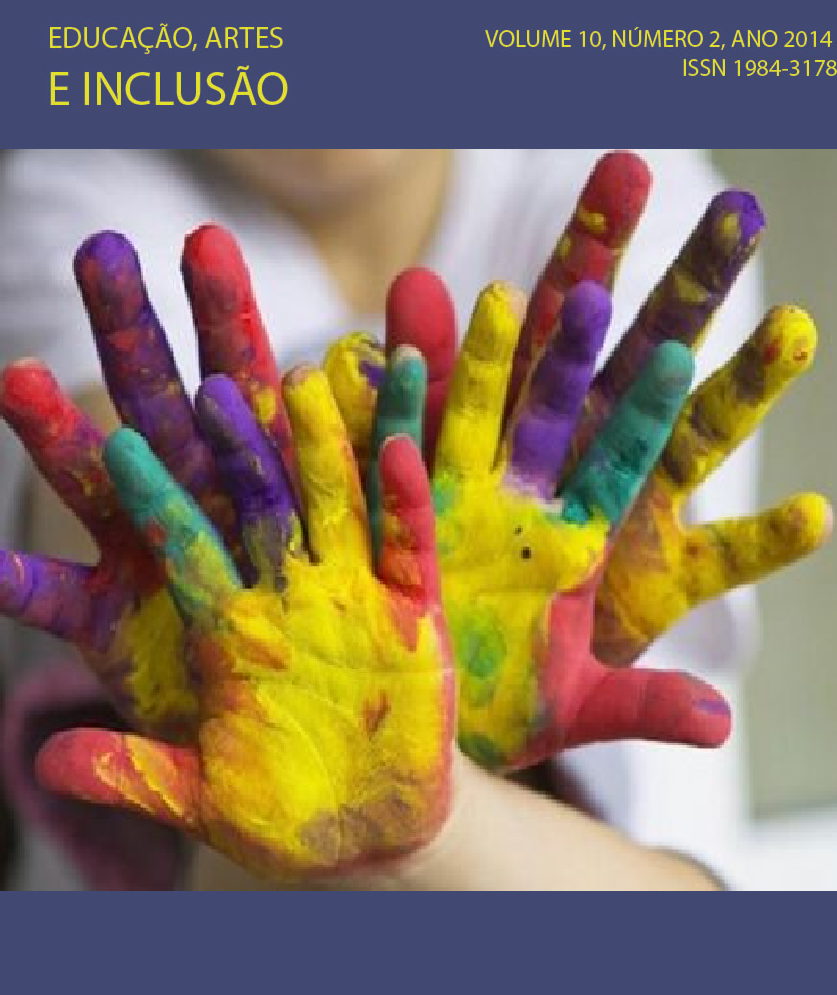LIBRÁRIO: LIBRAS PARA TODOS
DOI:
https://doi.org/10.5965/198431781022014077Keywords:
arte, design inclusivo, deficiente auditivo, educação.Abstract
A língua de sinais é uma linguagem bela e expressiva, que possibilita a comunicação uns com os outros, com facilidade e rapidez para a interpretação da mente dos surdos, afirma Long (1910). Na prática, existe grande dificuldade e falta de preparo por parte da população, para lidar com a deficiência auditiva. A pesquisa procura investigar e propor soluções, para suprir as necessidades educacionais dos deficientes auditivos e expandir a linguagem de sinais. No ambiente de ensino questões como espaço e posicionamento dos alunos são cruciais para o estudante com deficiência auditiva. A metodologia utilizada foi à pesquisa-ação, que em contato com o universo dos surdos, proporcionou um panorama da necessidade de comunicação mais eficiente, e a possibilidade dos ouvintes aprenderem a linguagem “da Libras”. Foi desenvolvido um jogo para incentivar o uso da Libras, de forma lúdica. O jogo “Librário” é constituído de um baralho de pares de cartas, contendo os sinais de libras e as palavras em português, possibilitando o aprendizado de sinais para ouvintes. Foram desenvolvidas oficinas de arte educação para jovens, viabilizando a comunicação entre os participantes. Essa troca permite o aprendizado de forma divertida, como o estreitamento de laços entre a comunidade, onde todos estão incluídos.Downloads
Downloads
Published
How to Cite
Issue
Section
License
Copyright Statement
The Educação, Artes e Inclusão is a journal that follows the Free Access Policy. The articles published by the journal are free of charge, intended for educational and non-commercial applications. The articles whose authors are identified represent the expression from the point of view of their authors and not the official position of the Educação, Artes e Inclusão Journal or the Educação, Artes e Inclusão Research Group.
Authors who publish in this journal agree to the following terms:
(A) Authors retain the copyright and grant the journal the right of first publication, with the work simultaneously licensed under the Creative Commons Attribution License which allows the sharing of the work with acknowledgment of authorship and initial publication in this magazine.
(B) Authors are authorized to take additional contracts separately, for non-exclusive distribution of the version of the work published in this journal (eg publish in institutional repository or as a book chapter), with acknowledgment of authorship and initial publication in this magazine.
(C) This journal provides public access to all of its content, as this allows for greater visibility and scope of published articles and reviews. For more information on this approach, visit the Public Knowledge Project.
This journal is licensed under a Creative Commons Attribution-NonCommercial-ShareAlike 4.0 International License. This license allows others to remix, adapt and create from your work for non-commercial purposes, and although new work must give you due credit and cannot be used for business purposes, users do not have to license such derivative works under the same terms.



